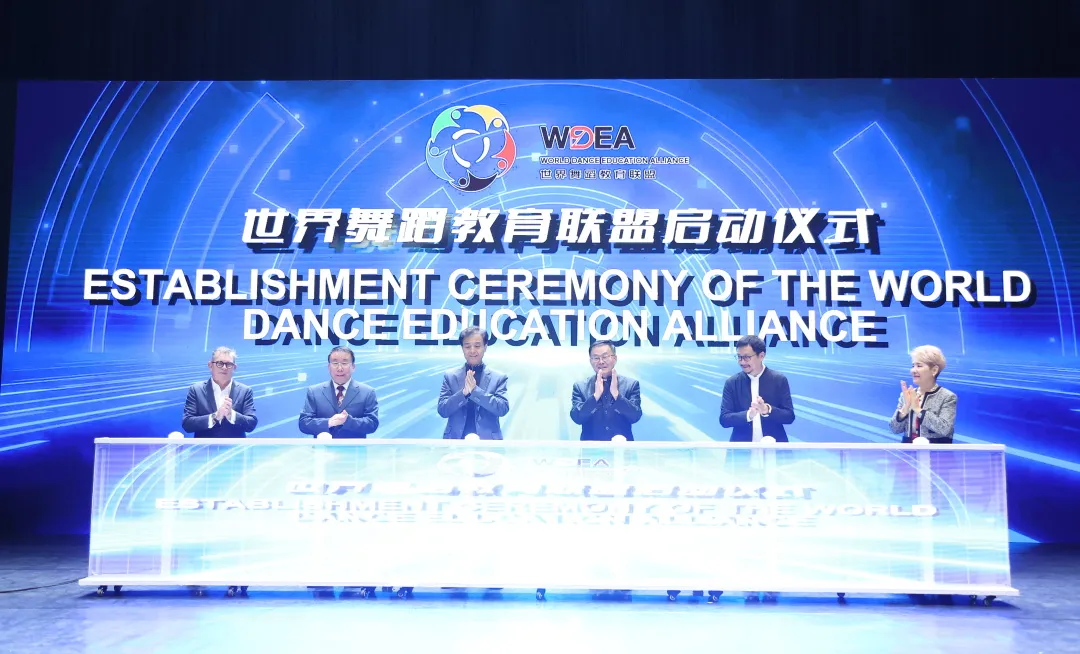
Gathering at BDA: International Experts Discuss Future of Dance Education
On October 18, the World Dance Education Alliance (WDEA) was launched at the Beijing Dance Academy (BDA). Twenty-nine experts and scholars, including representatives of alliance member institutions from Asia, Europe, the Americas, and Oceania, as well as academic leaders such as presidents, deans, and department heads specializing in dance education, gathered to speak at the International Dance Academic Leaders Forum. Centered on the theme “Future-Oriented Development of Dance Education,” they held in-depth discussions on the challenges facing international dance education and corresponding strategies, aiming to jointly advance the high-quality development of dance education worldwide.
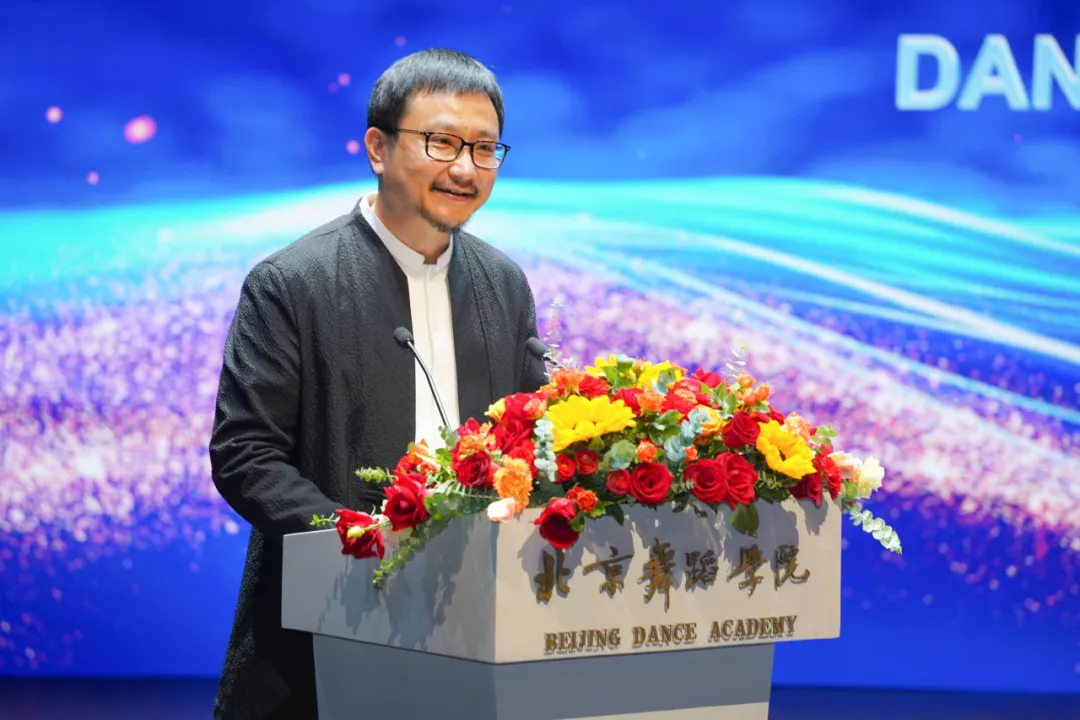
Xu Rui, Deputy Party Secretary and President of the Beijing Dance Academy (BDA), delivered a keynote speech titled Chinese Dance: A Vibrant Representation of Cultural Inheritance and Development. He emphasized that Chinese dance vividly embodies the continuity of Chinese civilization, using the human body to express the profound depth of its history and culture. As a dynamic transmission of millennia-old traditions, Chinese dance serves as a unique and vital vehicle for Chinese civilization beyond written and spoken language.
The diverse dance forms of China’s ethnic groups weave together a distinctive cultural tapestry, reflecting a dynamic convergence of tradition and modernity, East and West. Continuously evolving through openness and innovation, Chinese dance has developed a unique national character. In the face of cultural homogenization driven by modernity, it offers Chinese wisdom and solutions for preserving cultural diversity. Through innovative heritage practices, Chinese dance radiates robust vitality, anchored in its profound cultural roots.
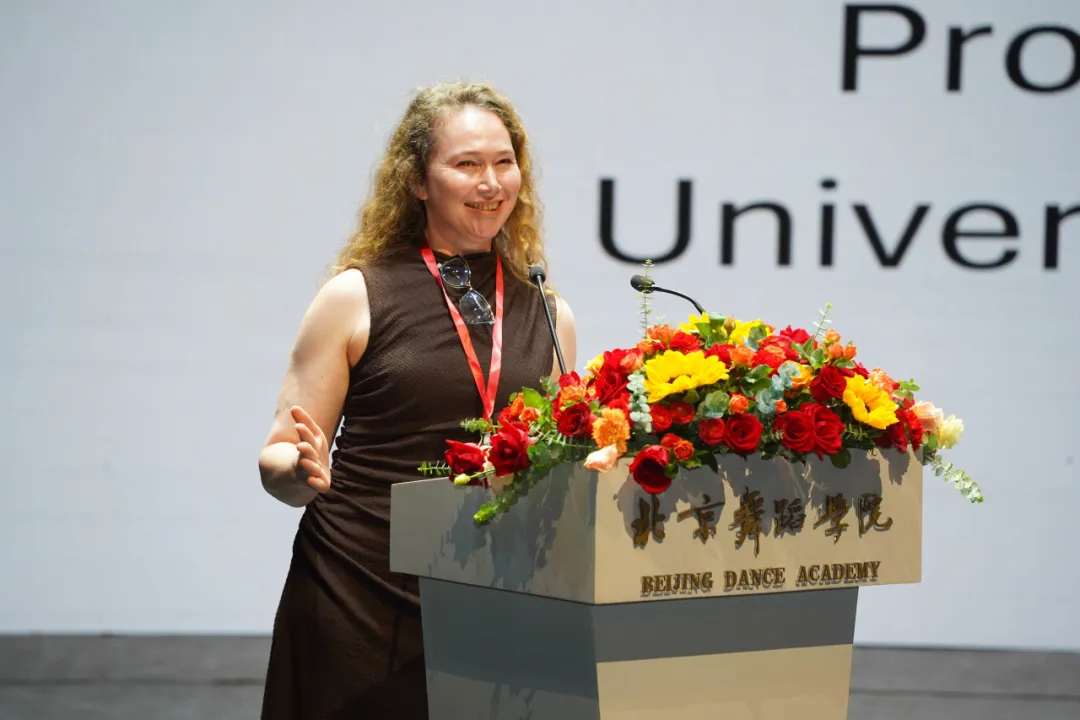
Sarah Patricia Mondra Houston, Head of the Dance Department and Director of the Centre for Creative & Artistic Exchange Research at the University of Roehampton’s School of Arts, delivered a keynote speech titled Future Visions for Community Dance. She shared insights from her engagement in global dance initiatives, highlighting poignant stories of individuals with Parkinson’s disease experiencing beauty through movement.
Houston emphasized dance’s profound impact on people across diverse backgrounds, ages, and health conditions. She argued that community dance fosters social inclusion and cohesion, and called for future dance practices to be more participatory and diverse, reaching broader populations.
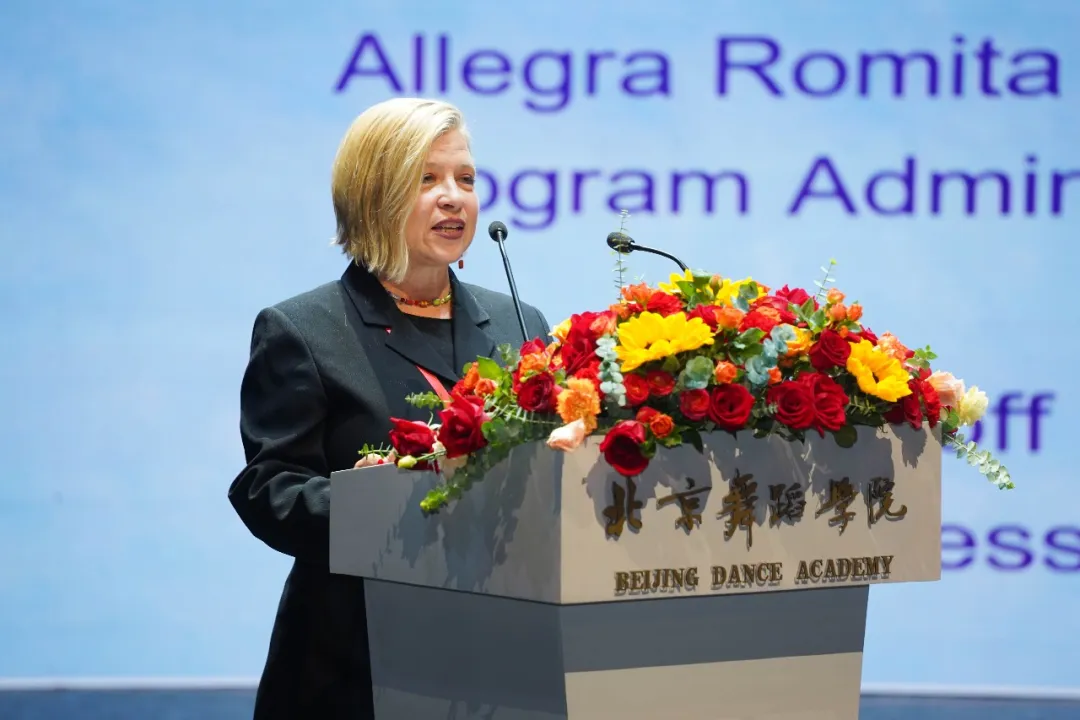
Deborah Damast, Head of the Dance Education Program at New York University’s Steinhardt School, delivered a keynote speech titled How Dance Teaches Leadership. She argued that the future of dance education must be global and interconnected, affirming the inherent value of all dance forms.
“We possess the capacity to build a dance education ecosystem that integrates diverse teaching methodologies, cultural practices, and genres,” stated Damast. She emphasized that future dance pedagogy should prioritize the social dimension, empowering each participant while creating expanded opportunities for the evolution of dance education.
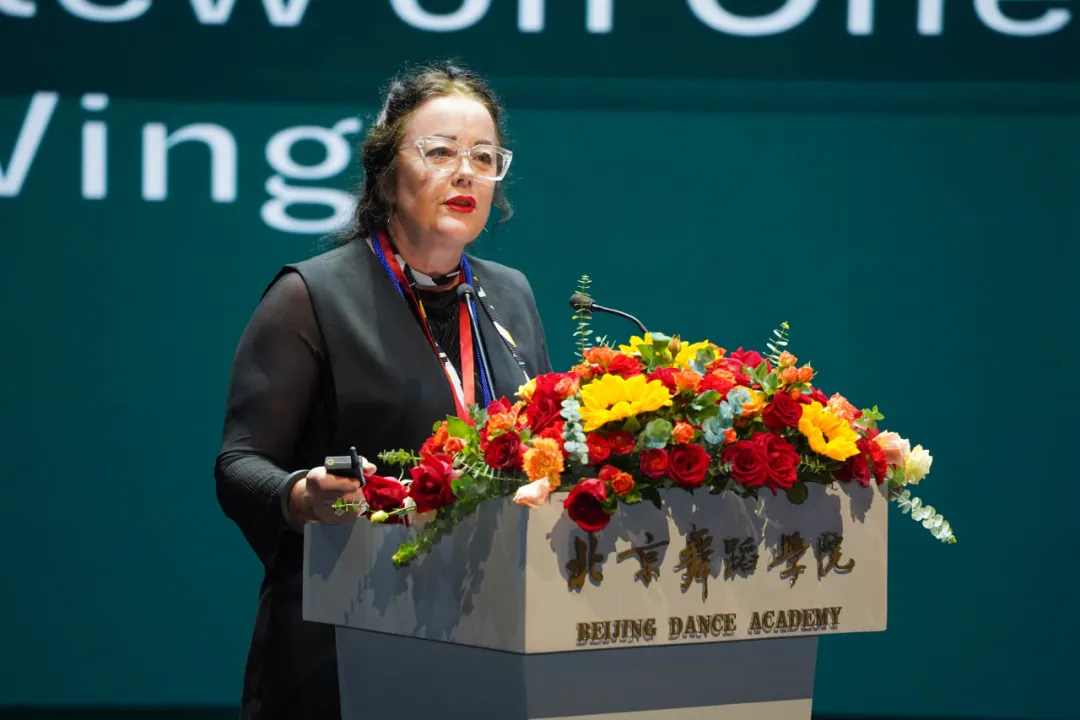
Vanessa Byrnes, Dean of the School of Creative Industries at Unitec Institute of Technology (New Zealand), delivered a keynote speech titled One Wing is Not Enough: Reflections on Cross-Cultural Collaborative Dynamics. She emphasized the interconnected nature of dance education, noting that balanced cross-cultural partnership lies at the core of Unitec’s dance curriculum.
The institution’s practice-oriented programs maintain strong connections with the professional dance sector. Through Unitec’s joint initiative with the Beijing Dance Academy (BDA), both institutions exchanged teaching methodologies, enhancing students’ artistic competencies—a testament to the critical role of collaboration in performing arts education.
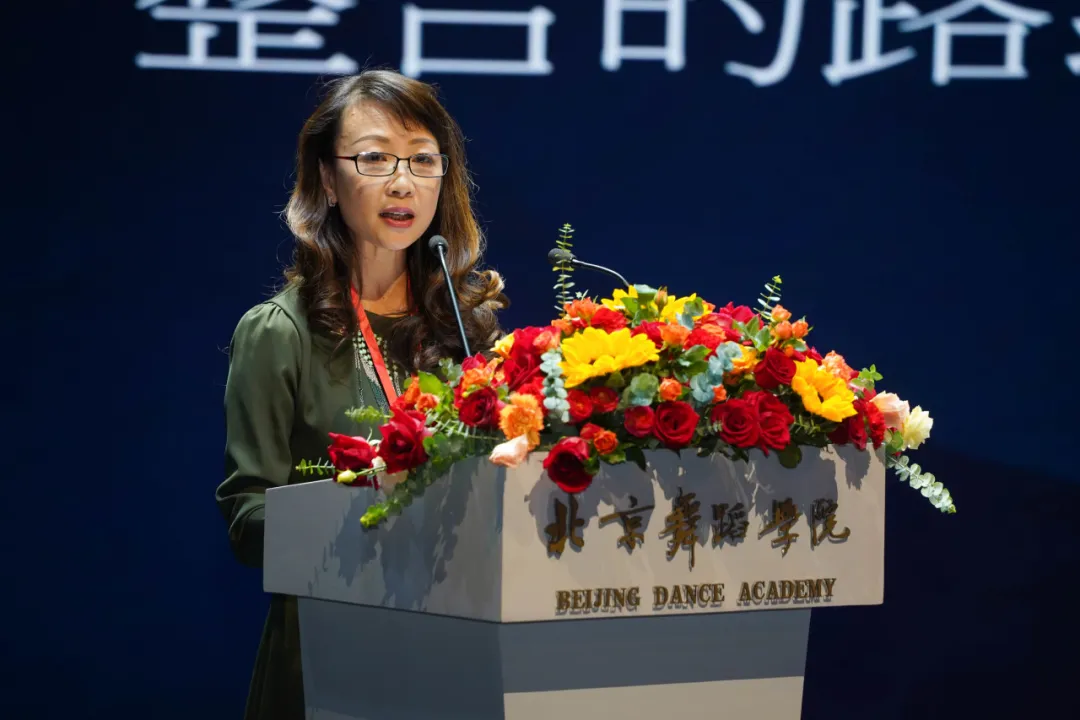
Cindy Suen, Dean of the School of Dance at The Hong Kong Academy for Performing Arts (HKAPA), delivered a keynote speech titled Digital Landscape: Generative AI’s Impact on Dance Education in a Technology-Driven World. She emphasized technology’s role in redefining dance pedagogy, stressing the need to critically reimagine curriculum reform to safeguard student agency and guard against over-reliance on technological tools.
Suen further outlined the academy’s five-point action plan, urging dance educators to proactively embrace technology. This initiative aims to address challenges posed by rapid technological evolution while securing dance education’s position at the cutting edge of innovation.
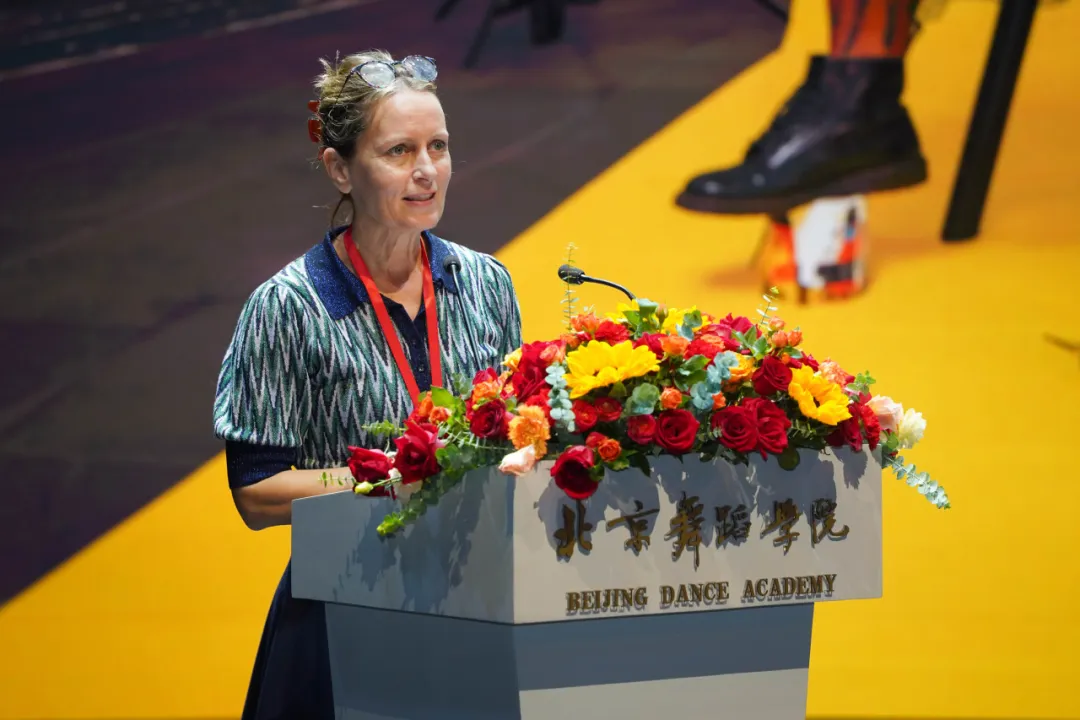
Emma Redding, Dean of the Victorian College of the Arts at the University of Melbourne, delivered a keynote speech titled Integrating Science into Dance Training. She outlined the College’s commitment to advancing dance science—a discipline dedicated to optimizing dancers’ health and performance, with core objectives of reducing injury rates and enhancing training outcomes.
Redding emphasized that global collaboration and diversified research, particularly in non-Anglophone regions, are essential for the maturation of dance science. She advocated for strengthened international educational dialogue to accelerate the development and application of dance science, thereby safeguarding dancer well-being and driving artistic innovation.
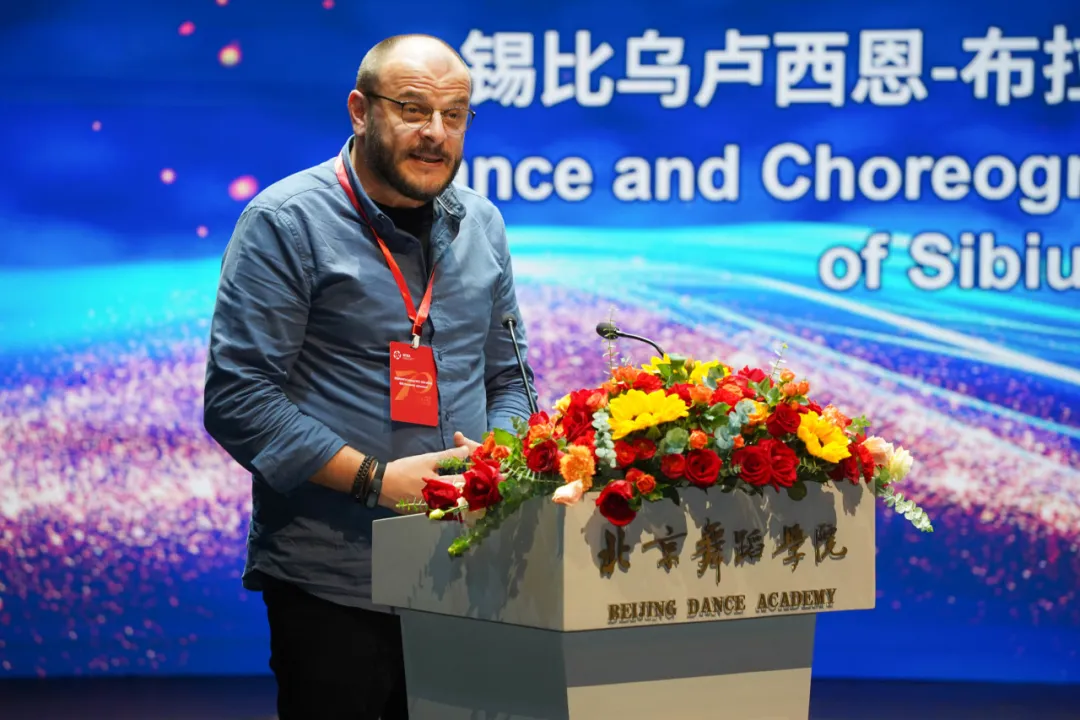
Ionut Tomuș, Director of the Doctoral School of Theatre and Performing Arts at Lucian Blaga University of Sibiu (Romania), delivered a keynote speech titled Dance and Choreography Studies in the Context of Lucian Blaga University of Sibiu and the Sibiu International Theatre Festival. He asserted that dance education must embody multiculturalism within globalization, encouraging students to pursue global artistic growth while safeguarding their own cultural traditions throughout their careers.
Furthermore, through partnerships with folk dance ensembles, the institution advances cultural heritage preservation while enriching students’ artistic expression.
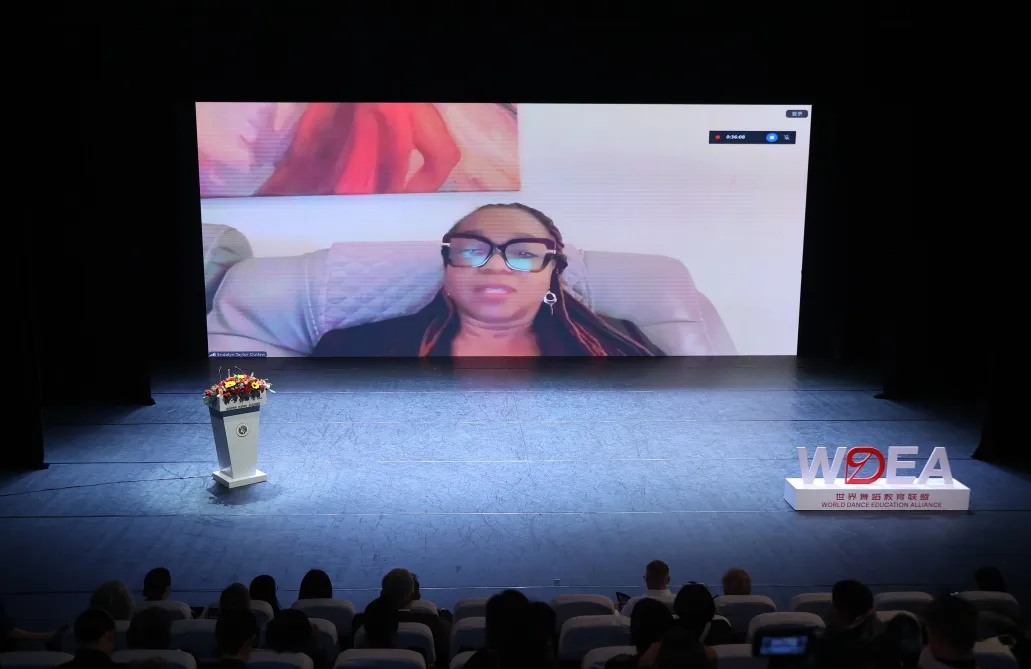
Endalyn Taylor, Dean of the School of Dance at the University of North Carolina School of the Arts (UNCSA), delivered a virtual keynote speech titled Championing Diversity in Ballet. She articulated UNCSA’s commitment to integrating technical mastery, imagination, passion, and intellect within dance, fostering a performance-driven educational community.
Taylor emphasized the School’s dual dedication to advancing artistic innovation and global partnerships. This approach supports students’ lifelong development while driving transformative change in dance education—ultimately cultivating impactful artists, educators, and leaders.
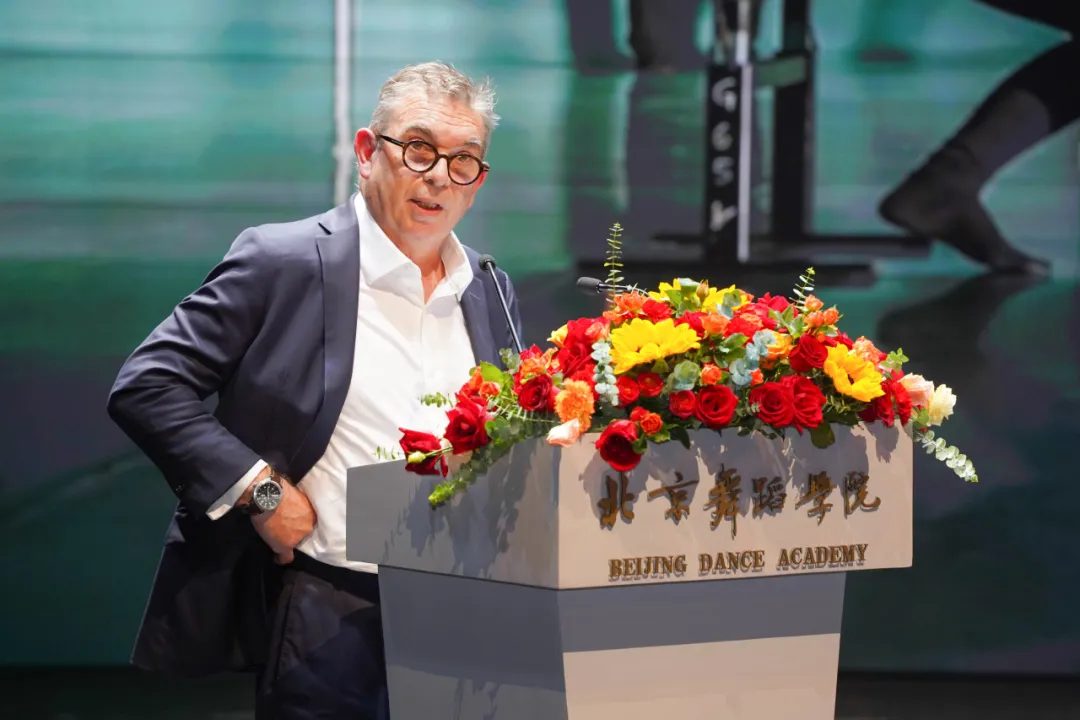
Anthony Bowne, Principal of Trinity Laban Conservatoire of Music and Dance (UK), delivered a keynote speech titled Where Tradition Meets Tomorrow. He outlined the institution’s strategy for navigating transformative eras, defining “tradition” as the bedrock of technical mastery in dance. “While technology and interdisciplinary practices shape our future,” Bowne asserted, “core technical skills remain indispensable.”
Conversely, he framed “tomorrow” as a realm allowing for artistic diversity and creativity, catalyzing experimental forms. This dual approach equips dancers with enhanced strength, control, and discipline—essential capacities to meet evolving choreographic challenges and embrace future possibilities.
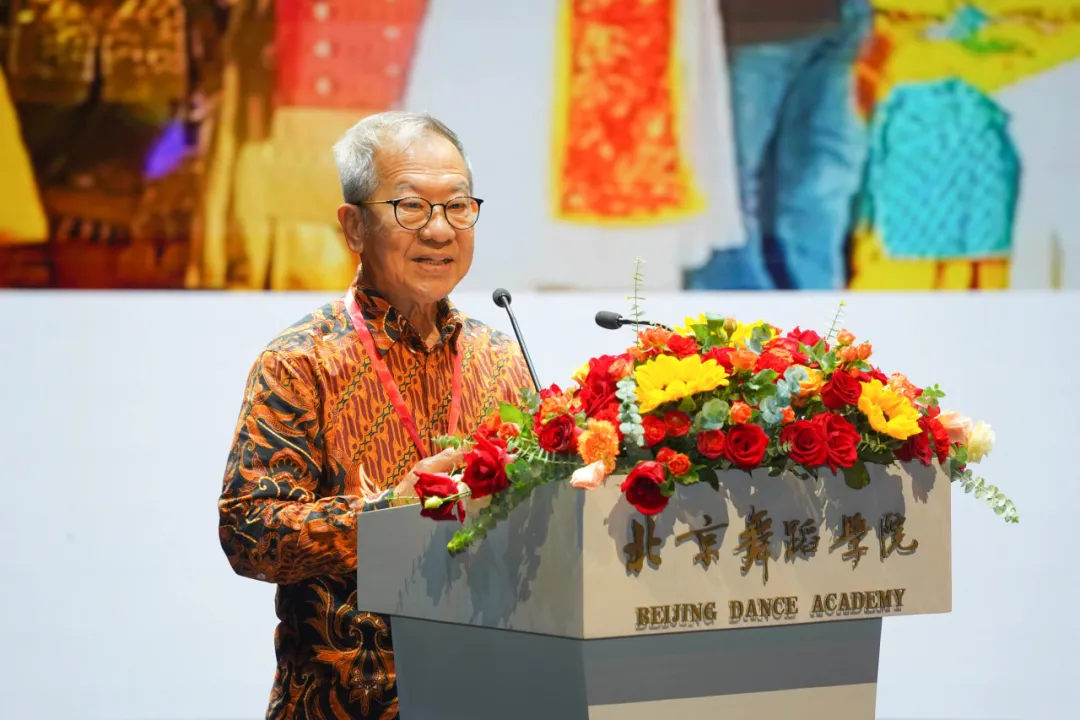
Chua Soo Pong, Life Arts Consultant and Member of the Academic Council at Raffles Conservatoire (Singapore), delivered a keynote speech titled Dance as Cultural Collaboration: Insights from the 2023 ASEAN Bangsik Festival. He attributed the festival’s success to five Southeast Asian nations collectively narrating a shared story—forging a common cultural heritage while nurturing distinct interpretative versions across participating countries.
The festival’s creative development, grounded in mutual respect and accommodation, exemplified cross-cultural dialogue and synergy through collaborative artistry.
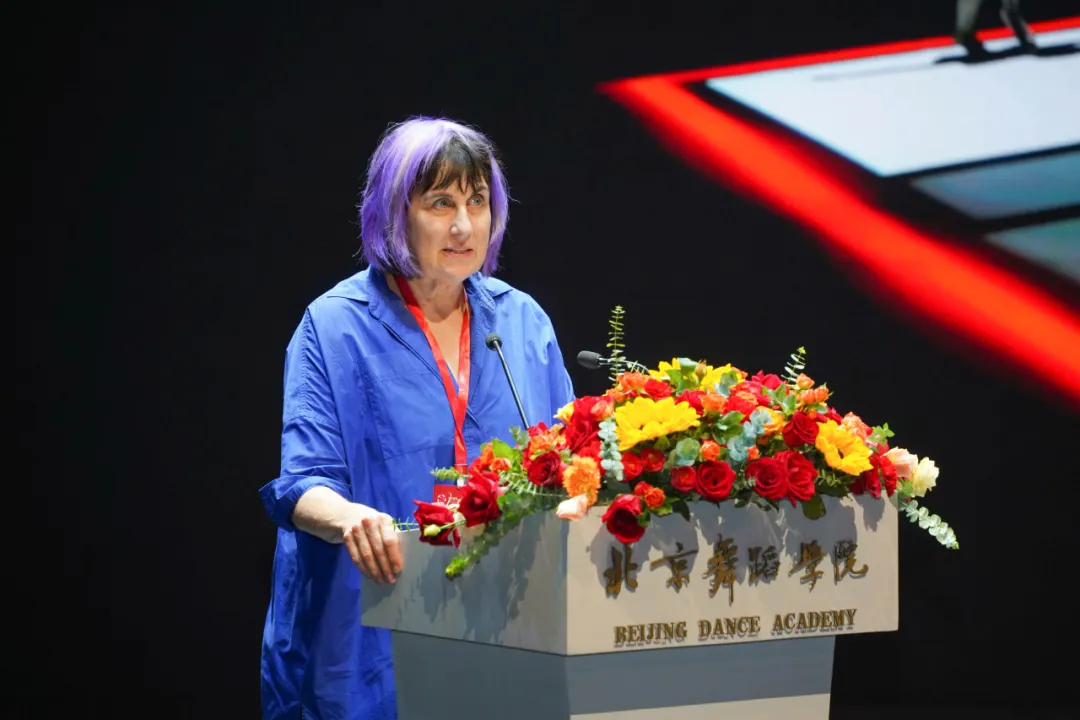
Rosanna Gamson, Dean of the Sharon Disney Lund School of Dance at California Institute of the Arts (CalArts), delivered a keynote speech titled O, The Marvelous!. She explored how the institution disrupts conventional paradigms in artistic creation, catalyzing experimental innovation and interdisciplinary collaboration.
Gamson contended that educators must actively invite and reward invention and partnership—broadening aesthetic horizons, dismantling norms, and prioritizing inquiry over replication. This requires releasing the grip of perfectionism, relinquishing authoritarian postures, and ultimately cultivating creative agency and original vision.
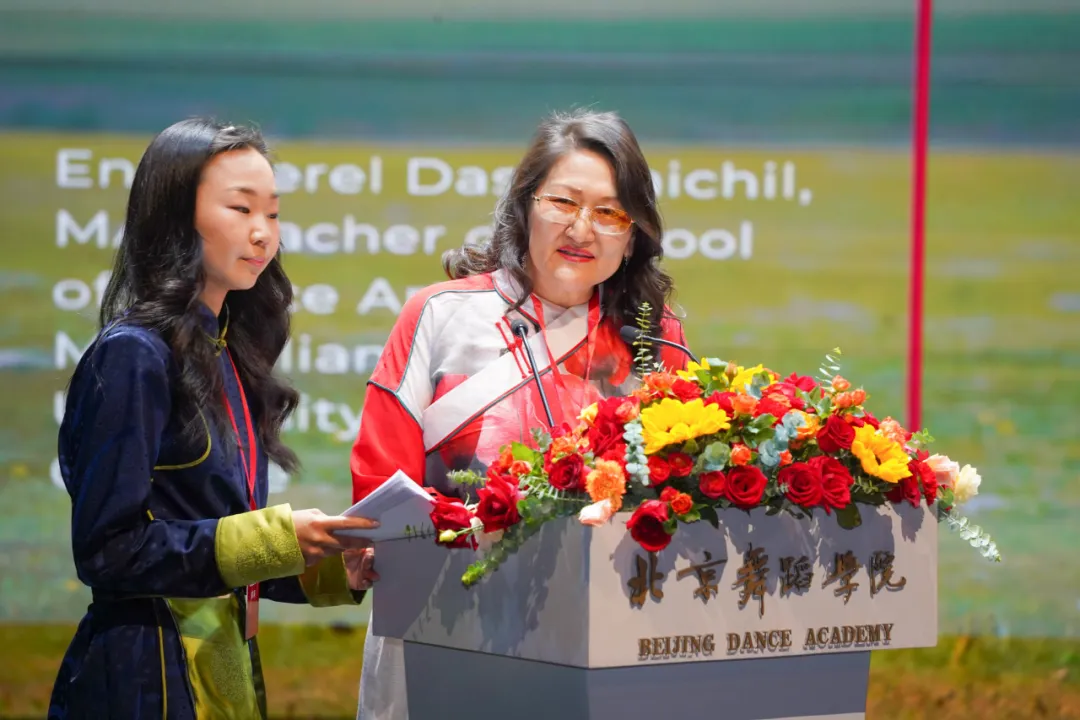
Erdenetsetseg, Dean of the Faculty of Culture at the Mongolian National University of Arts and Culture (first right), delivered a keynote speech titled Typology and Characteristics of the Mongolian Dance “Bei Bei Le Ge”. She articulated the work’s intent to explore the sacred interconnection between humanity and nature, embodying their harmonious coexistence.
Through its physical vocabulary, the dance conveys ancestral understandings of heaven and earth while synthesizing Mongolia’s historical and cultural traditions—revealing the preservation value of this enduring cultural legacy. Following the address, Merited Artist D. Enkhgerel demonstrated the traditional Mongolian dance Bei Bei Le Ge before the assembly.
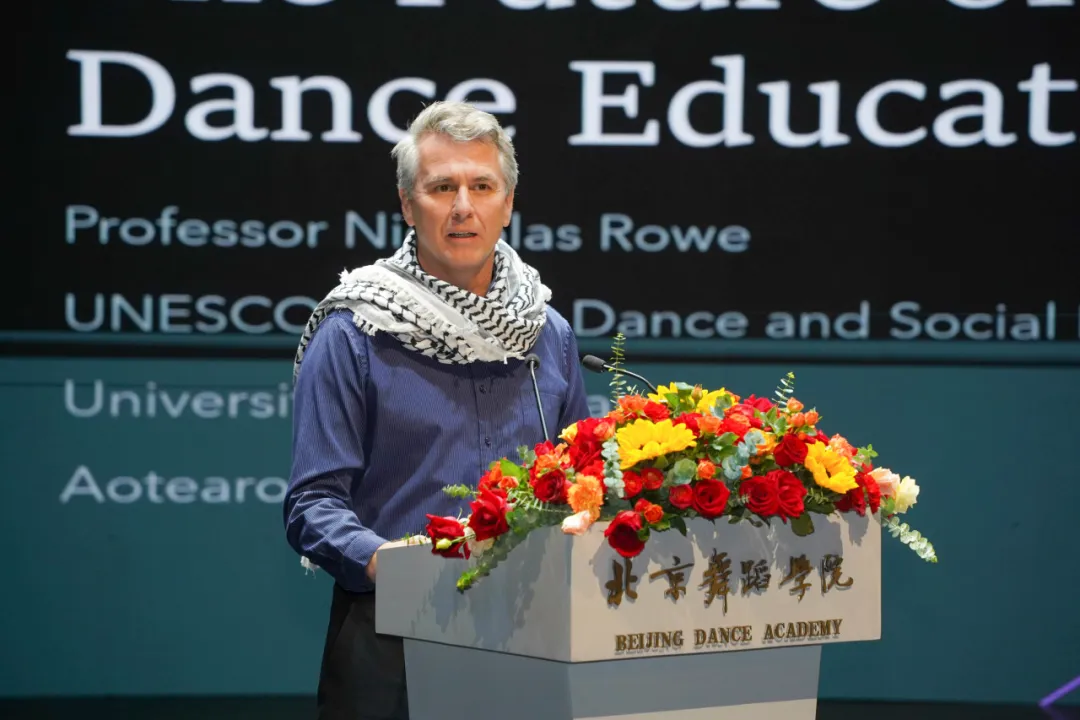
Nicholas Rowe, Deputy Dean of the Faculty of Creative Arts and Industries at the University of Auckland (New Zealand), delivered a keynote speech on Reimagining Dance Education for the Future. He contended that future dance pedagogy must transcend historical paradigms, ethically engaging with societal challenges.
Rowe asserted that arts education should equip students with capacities for lifelong learning and transcultural creativity, advancing equitable artistic training. He called for a collective commitment to transformative change—making dance education more inclusively accessible and socially resonant.
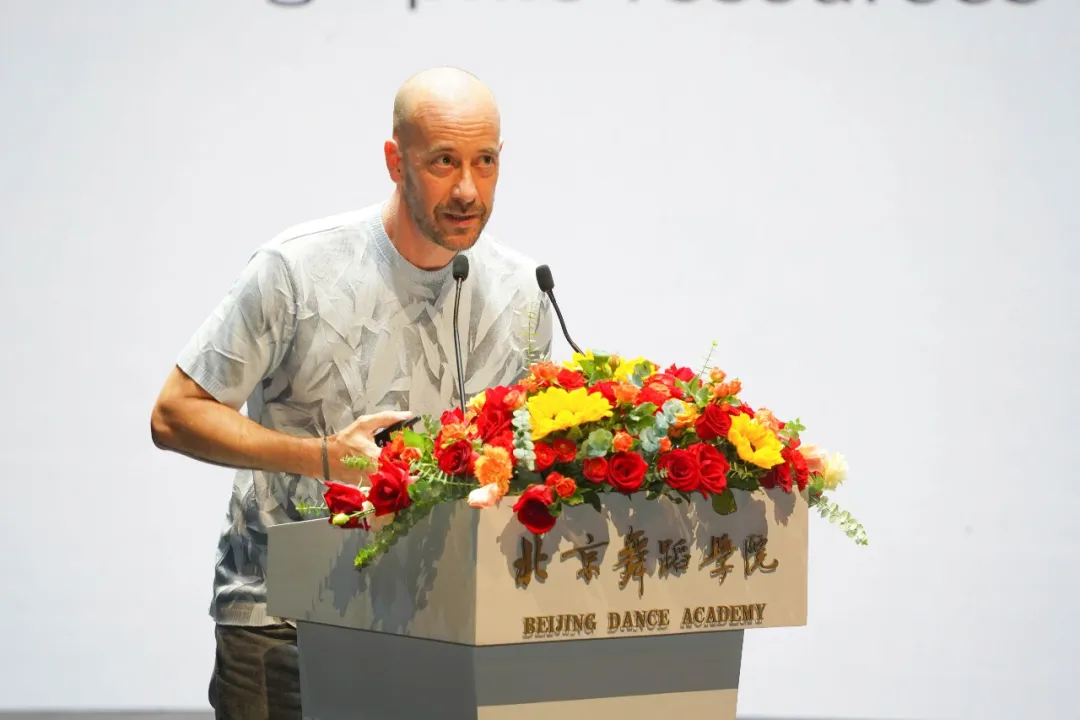
David Blin, Director of the Lyon Branch at France’s National Center for Dance (CND), delivered a keynote speech titled The National Center for Dance: France’s Unique Model as a Choreographic Resource Hub. He detailed the CND’s multifaceted mission: providing training and support for professional dancers, advancing research to preserve and transmit dance heritage, fostering diverse choreographic creation, and facilitating cross-disciplinary artistic dialogue.
Concurrently, the Center champions community-based creation. Its digital resources amplify the reach of live programming while offering accessible cultural/artistic educational materials and archival dance footage.
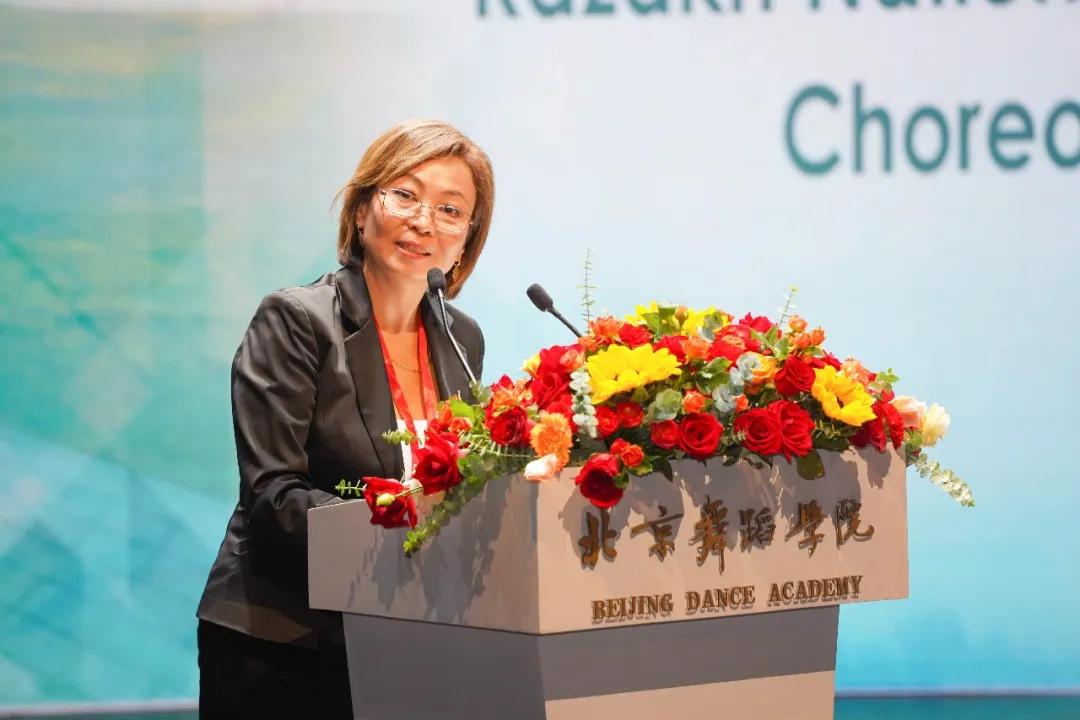
Aitolkyn Turganbayeva, Head of the Dance Department at the Kazakhstan National Academy of Dance (KNAD), delivered a keynote speech titled Achievements in Kazakh Choreographic Education: A Case Study of the Kazakh National Academy of Dance. She highlighted that since its founding in 1934, the Academy has evolved into Kazakhstan’s sole multi-tiered dance institution, offering an integrated educational continuum from foundational training to postgraduate studies that synthesizes technical mastery, artistic expression, and scientific principles.
In recent years, KNAD has accelerated scholarly research and creative production—establishing a dedicated Kazakh Dance Research Laboratory while forging partnerships with world-renowned dance institutions globally.
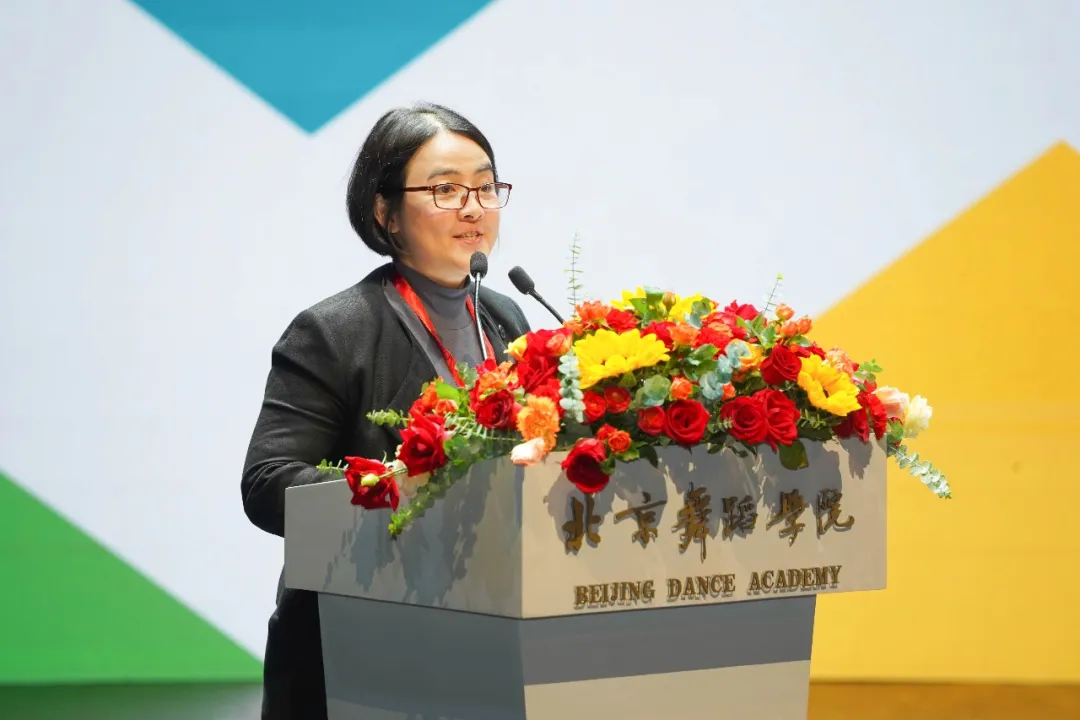
Chan Ke Xing, Head of the Dance Department at the University of Malaya (Malaysia), delivered a keynote speech titled The Future of Dance Education: Where Do We Go from Here?. Addressing global disparities in dance pedagogy, she noted Malaysia’s distinct emphasis on performance-oriented training.
Chan advocated for integrating kinetic skills with creative expression, urging educators to reform teaching paradigms through social constructivism and experiential learning theory. This approach cultivates students’ critical thinking and innovative capacities, ultimately propelling transformative change in dance education.
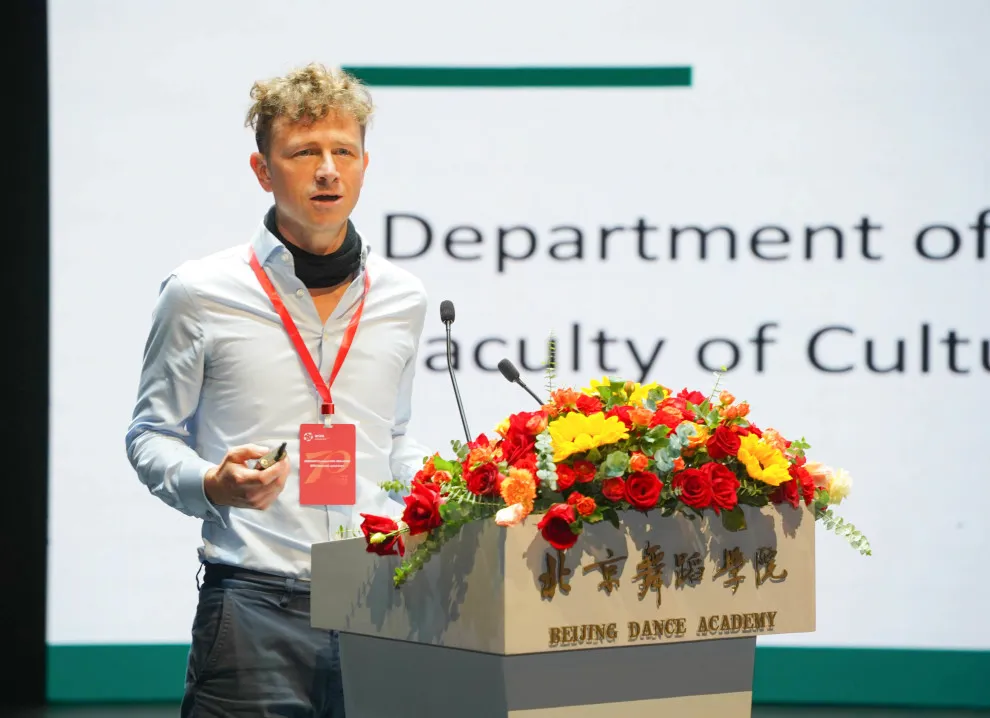
Ruard Absaroka, Board Member of the Asia-Pacific Forum and Head of International Affairs for the Department of Music and Dance at the University of Salzburg (Austria), delivered a keynote speech titled Intercultural Dance Studies: An Austrian Perspective. As a leading interdisciplinary dance research hub in the German-speaking European region, the university offers a distinctive transmedia lens spanning dance, music, and theater, including specialized cross-disciplinary master’s programs.
The institution’s Derra de Moroda Dance Archives house invaluable dance and musical heritage, advancing arts education through curated exhibitions and scholarly initiatives.
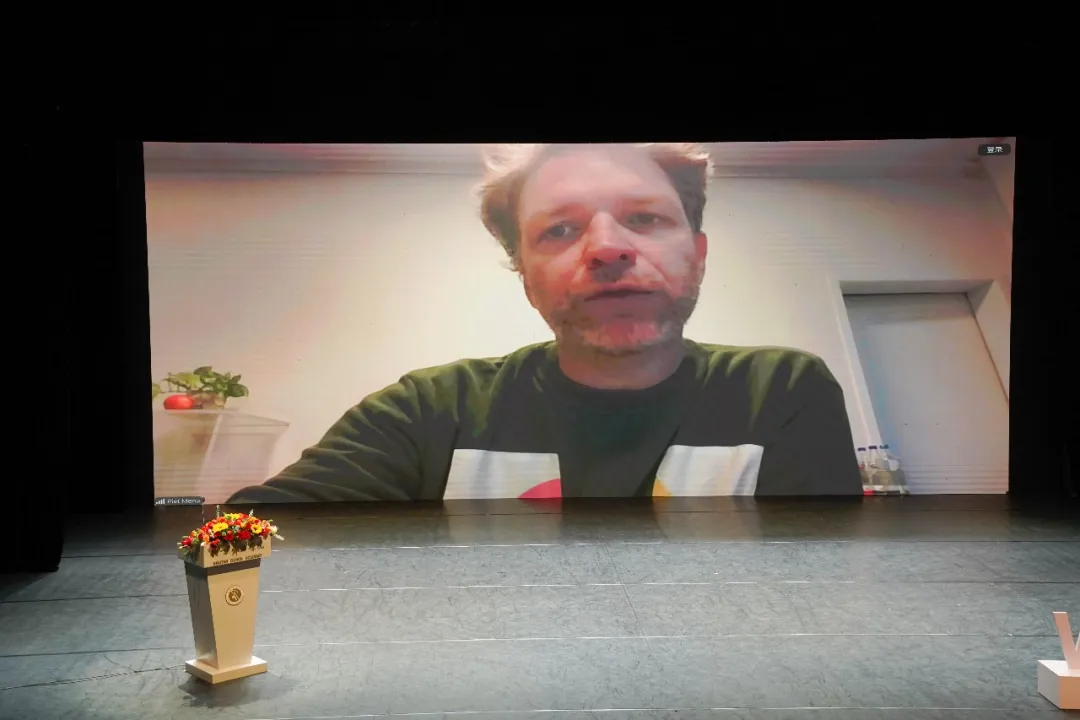
Professor Peter Menten, Director of the Royal Conservatoire Antwerp, delivered an online speech titled Introduction to the Royal Conservatoire Antwerp. He presented the institution’s diverse programs spanning dance, drama, and music, including Master of Education degrees and research opportunities. The conservatoire emphasizes interdisciplinary collaboration, maintaining strong partnerships with local and international organizations. It actively explores the integration of technology and the arts, cultivating professional artists, educators, and creative talents.
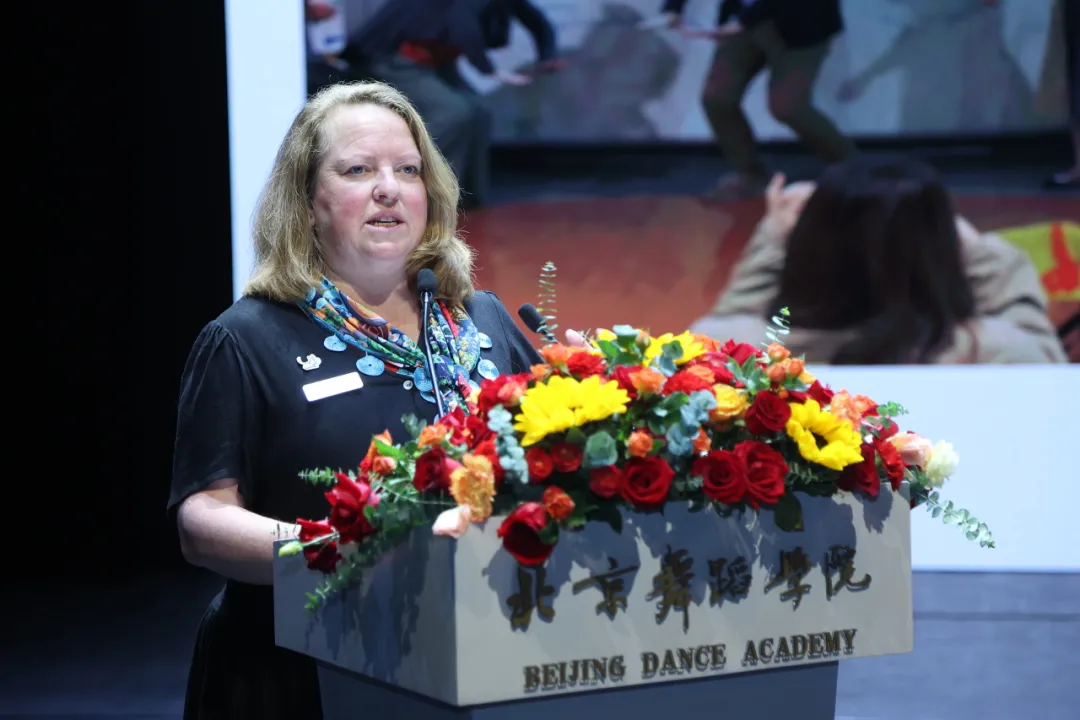
Dr. Michelle Ludeke, Senior Lecturer at Monash University, Australia, delivered a speech titled The Current State of Dance Education: A Case Study of Victoria, Australia. She advocated for a play-based pedagogical approach to enhance students’ creativity, physical fitness, cultural awareness, and teamwork skills. By integrating Indigenous Australian culture into dance education, she emphasized fostering critical thinking and intercultural understanding among students. However, she identified a key challenge: uneven teaching quality due to insufficient teacher training in higher education institutions. To address this, she called for strengthened professional development programs for educators to elevate the overall standard of dance education.
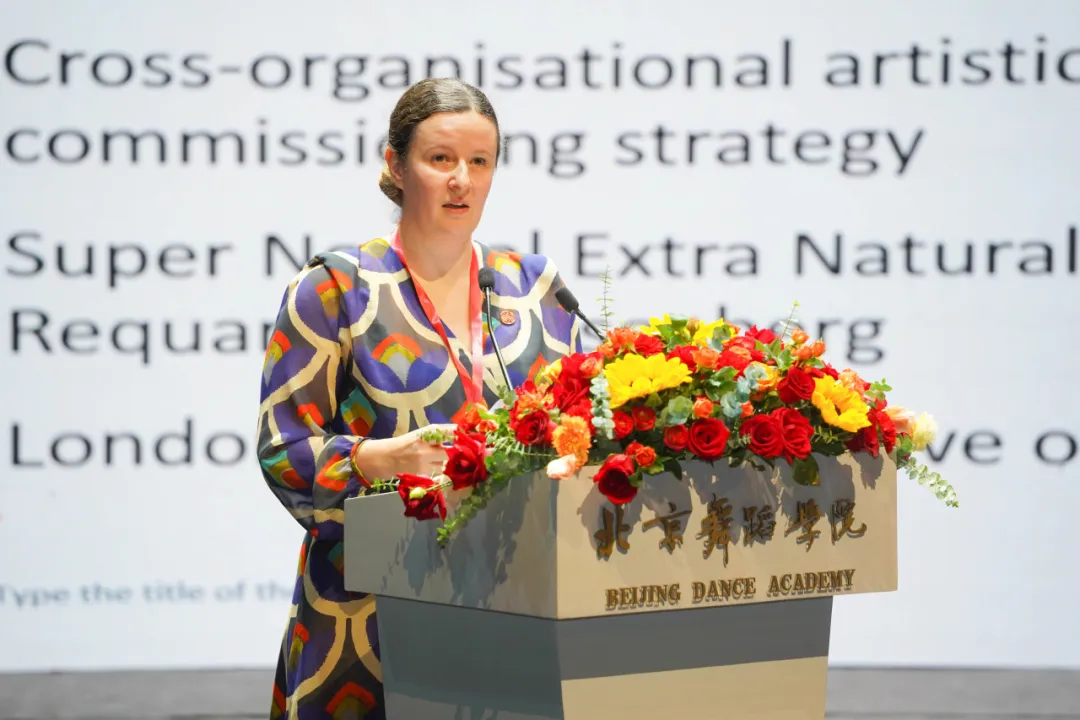
Lise Uytterhoeven, Head of the Dance Department at London Contemporary Dance School (LCDS), delivered a keynote speech titled The Power of Dance: Shaping Human-Centered Education in the Pursuit of a Greater Dance World. She outlined LCDS’s vision and curriculum, emphasizing dance’s universality and its profound impact on individual and collective well-being. Through interdisciplinary collaboration, innovative practice, and arts education, the institution cultivates independent dance artists while advocating for global partnerships and policy transformation to advance dance education and cultural diversity worldwide.
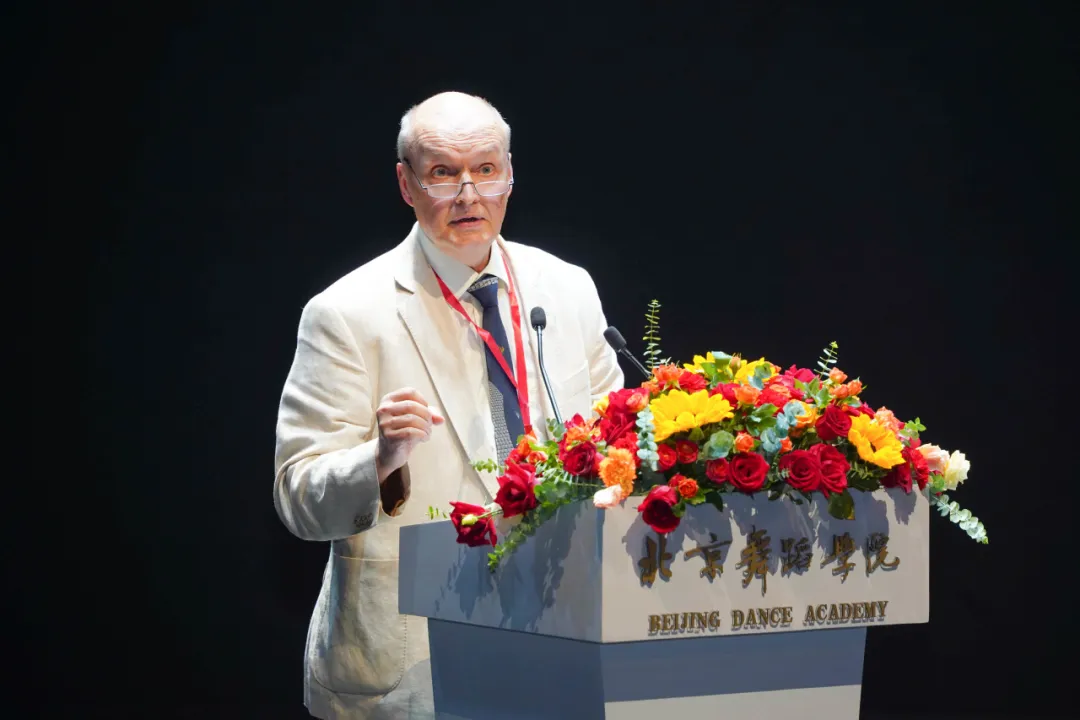
Professor Andrei Bosov of the Saint Petersburg State Conservatory delivered a lecture titled Pas de Deux Partnership in Classical Ballet: The Path to Perfection. He examined the historical evolution of pas de deux collaboration, tracing its development from the early 16th century when male and female dancers maintained light, fleeting contact, to the late 19th century when the technique became increasingly sophisticated. Drawing from his extensive teaching experience, Professor Bosov advocated for enhanced cooperation between ballet companies and academic institutions in three key areas: movement pedagogy, partner work techniques, and curriculum development, to further advance the art of classical ballet pas de deux performance.
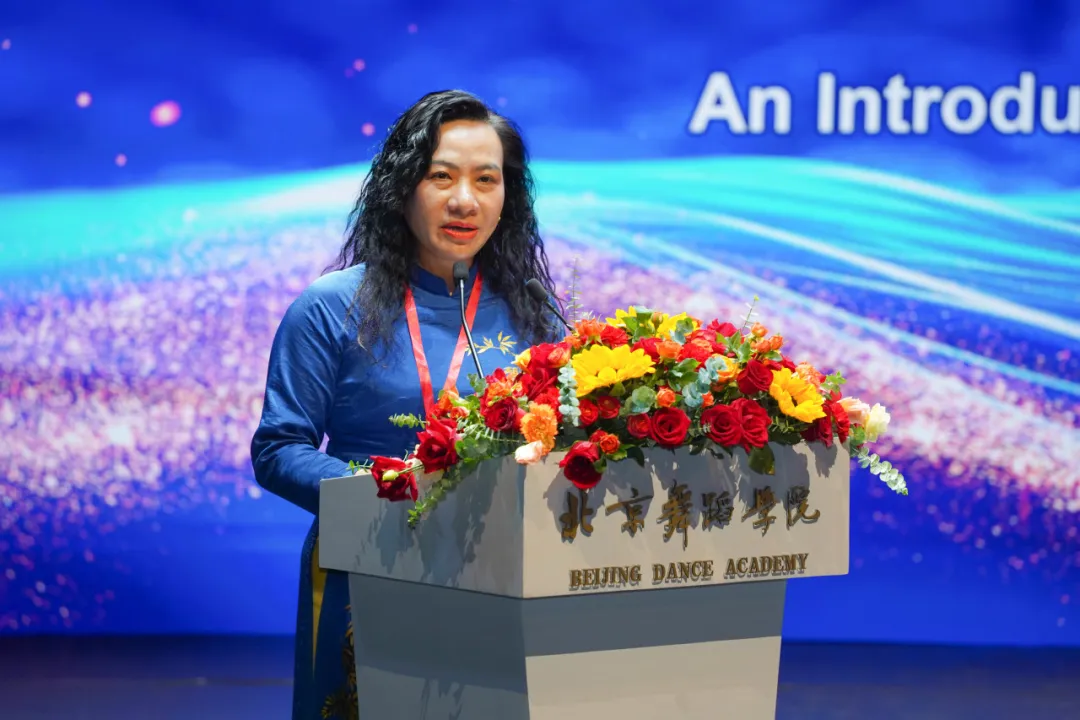
Madam Nguyen Thuy Nga, Director of the Vietnam National Dance College, delivered a presentation titled Introduction to Vietnam National Dance College. She outlined the institution’s development since its founding in 1959, highlighting its two main departments: Performance and Choreography. The college emphasizes the balanced development of comprehensive knowledge and practical experience, with a commitment to cultivating high-caliber international artistic talents. Through collaborations with multiple countries, the college organizes workshops and exchange programs, actively supporting arts development projects in Laos and Cambodia. Looking ahead, the institution plans to strengthen partnerships with additional nations.
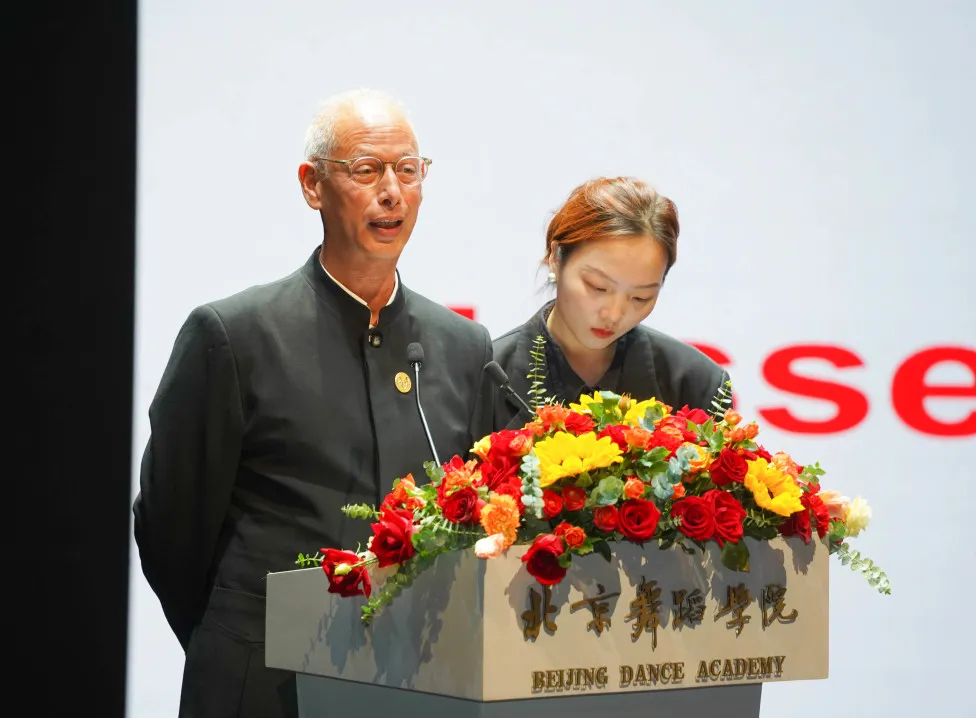
Mr. Taïb Ouar, Director of the National Dance School of Marseille (left in photo), delivered a speech titled Introduction to Our Institution and Characteristics of French Dance Education. Through a short film presentation, he introduced the school’s fundamental framework, which offers both classical and contemporary dance programs with professional faculty and diversified training. The institution maintains close collaboration with the Ballet National de Marseille and provides various diploma certifications. It has also established partnerships with numerous international dance organizations. Mr. Ouar expressed his aspiration to foster student development and international cooperation through artistic education exchanges.
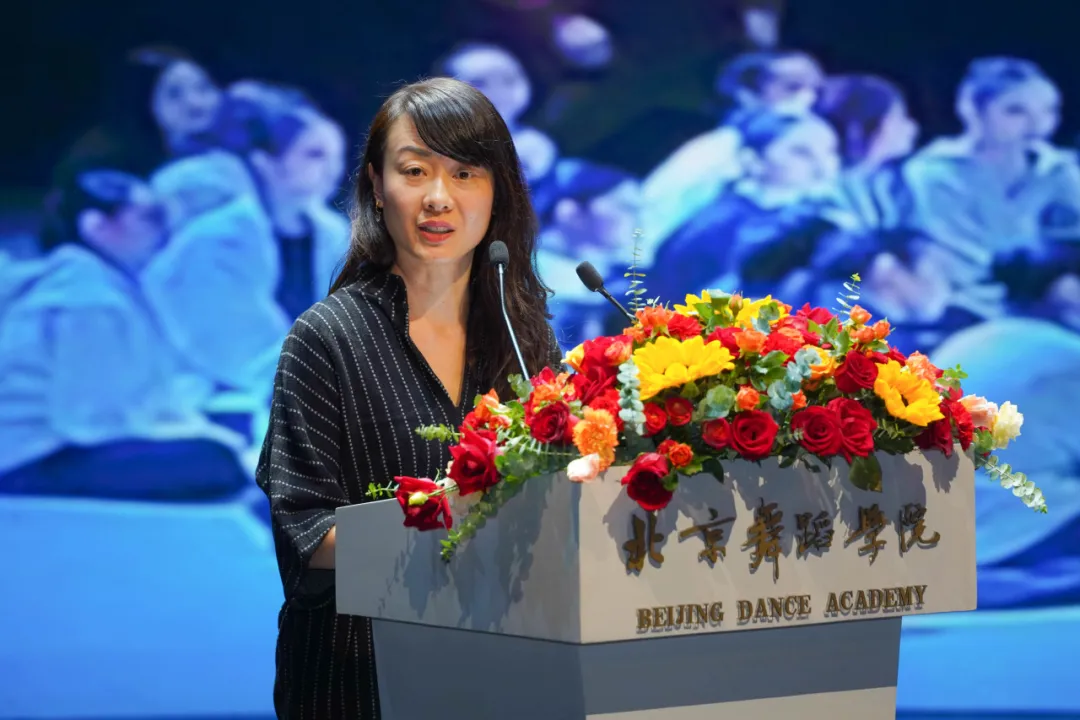
Dr. Yang Qiaohua, Vice Dean of the Dance Department at Nanyang Academy of Fine Arts (NAFA), College of Performing Arts under the University of the Arts Singapore, delivered a keynote speech titled Cultivating Global Learners: The Role of International Perspectives in Education.
She highlighted NAFA’s unique position as Singapore’s only arts university offering a comprehensive education pathway from preschool to master’s level programs. The institution is committed to nurturing students’ creativity and critical thinking through innovative pedagogy.
Emphasizing the transformative power of arts education, Dr. Yang showcased NAFA’s interdisciplinary collaborations with various institutions. These partnerships underscore the academy’s dedication to demonstrating how arts education enriches both individual lives and broader societal development.
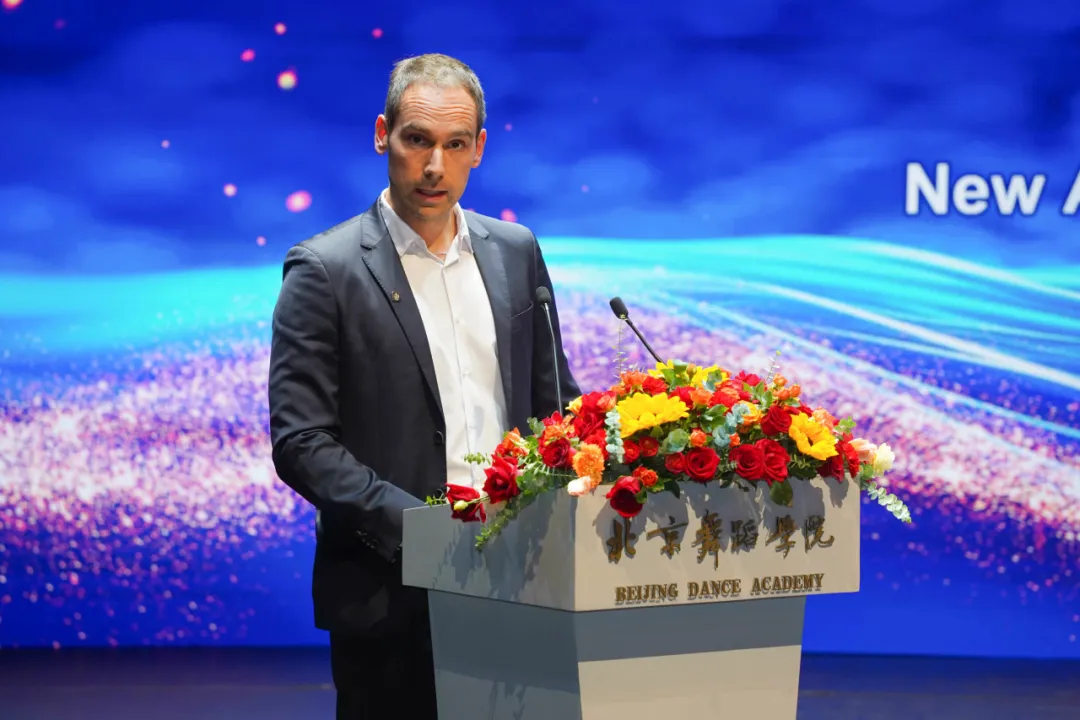
Mr. Milan Milić, Director of Ksenija Ballet School in Montenegro, delivered a keynote speech titled A New Era Demands a New Generation/New Challenges
He emphasized that the establishment of this alliance coincides with two significant milestones: the 75th anniversary of the People’s Republic of China and the 70th anniversary of the Beijing Dance Academy. This timely initiative aims to foster cross-cultural understanding and integration within the global dance community.
Mr. Milić highlighted that international collaboration serves as the cornerstone for addressing contemporary challenges in dance education. He called for creating supportive environments that nurture both artistic innovation and inclusive development. Looking ahead, he expressed enthusiastic anticipation for joint efforts with member institutions to cultivate the next generation of dance artists who can thrive in our interconnected world.
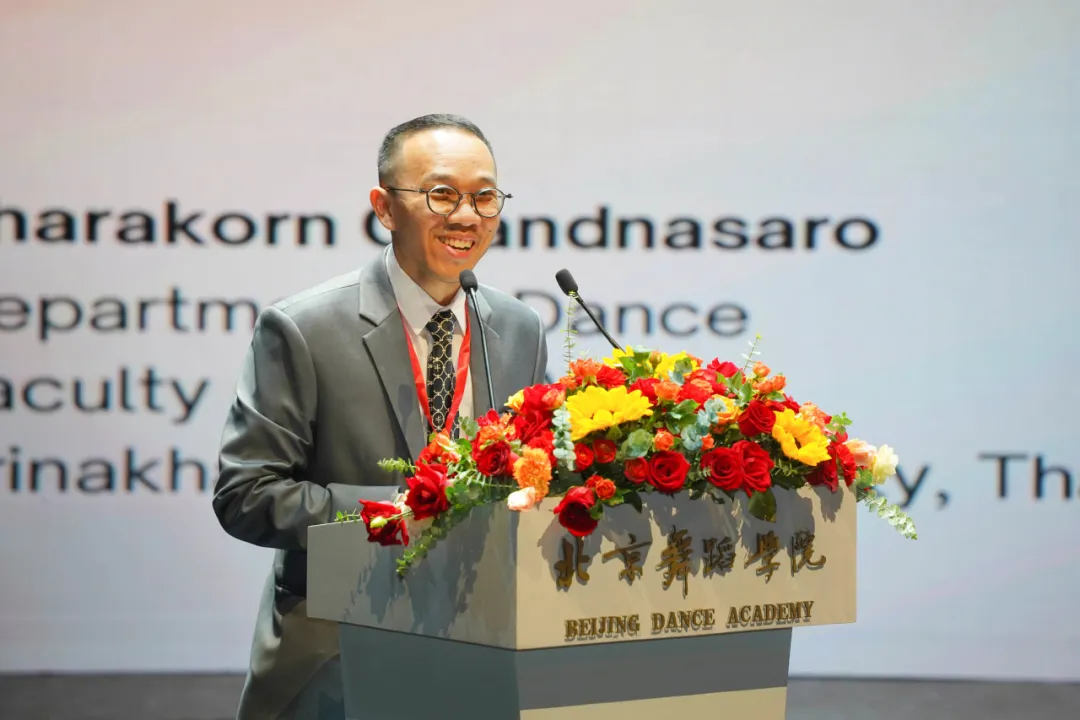
Dr. Tharakorn Chuenrasro, Head of the Dance Department at Srinakharinwirot University, Thailand, delivered an insightful presentation titled Innovative Pathways in Dance Education: Bridging Local Traditions with Global Perspectives.
In his address, Dr. Chuenrasro emphasized the crucial balance between preserving Thailand’s rich dance heritage and embracing global influences, positioning dance as a vital symbol of cultural identity. The university’s curriculum strategically integrates international dance forms while fostering students’ critical thinking and adaptive capabilities.
Highlighting the evolving demands of dance education, Dr. Chuenrasro called upon educators to empower students to thrive in our rapidly changing world. He advocated for developing artists who combine global awareness with innovative practice, capable of honoring traditional roots while engaging with contemporary dance discourse.
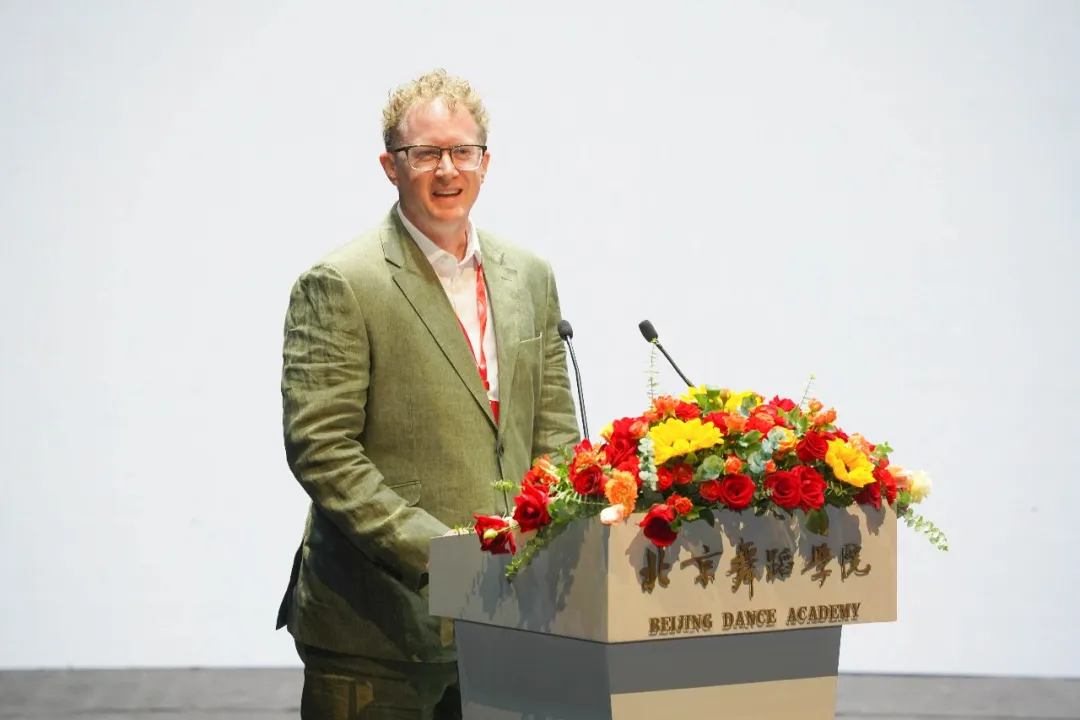
Mr. Jamison Anthony Dryburgh, Higher Education Director of Central School of Ballet (London), delivered an inspiring address titled Channeling Passion and Talent into Excellence: Reflections from Central School of Ballet.
In his presentation, Mr. Dryburgh emphasized the institution’s dual focus on cultivating both technical mastery in ballet and artistic expression. The school offers comprehensive undergraduate and postgraduate programs, employing small-class teaching methodologies with expert mentorship to maximize student potential.
A strong advocate for inclusive dance education, Mr. Dryburgh highlighted the school’s commitment to equitable opportunities while developing students’ critical thinking and transferable skills. This approach prepares graduates for diverse career pathways in the ever-evolving dance sector, from performance to education and beyond.
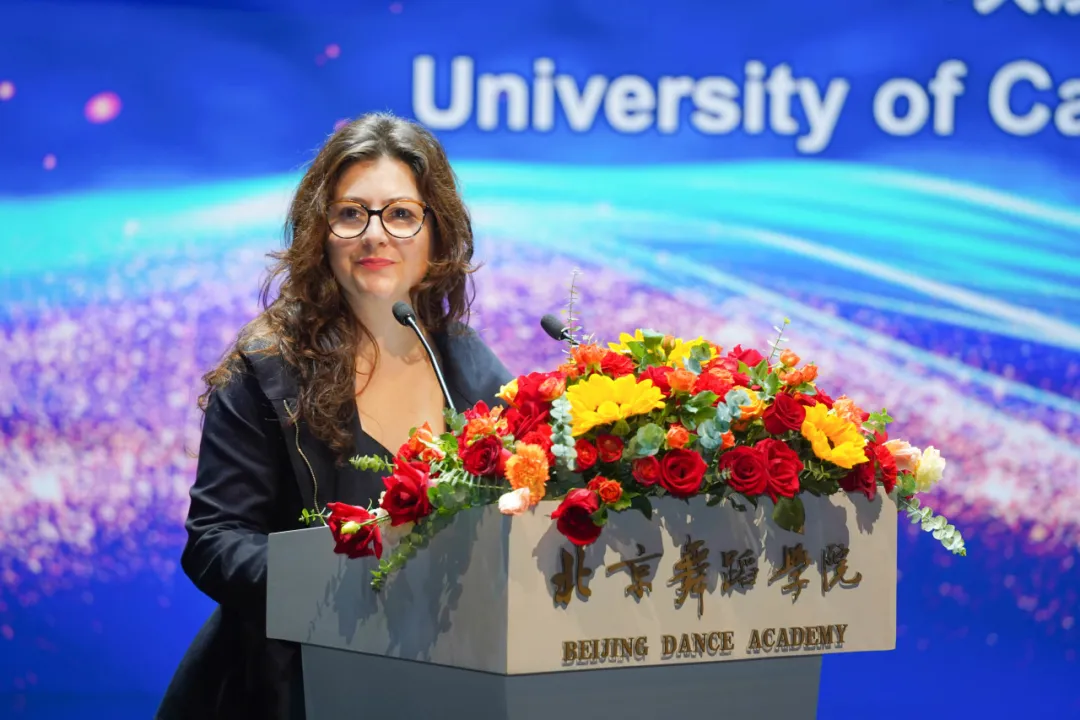
Ms. Juliana Martins, Deputy Director of the Dance Department at Brazil’s University of Campinas, gave a speech titled Dance Program at University of Campinas: History, Values and Outcomes.
She introduced the history and educational philosophy of the dance program, which has trained about 800 graduates now active in arts education and stage performance. The curriculum combines theory and practice to enhance students’ personal expression and social responsibility, cultivating artists and educators with both technical skills and intellectual depth who can drive social change.
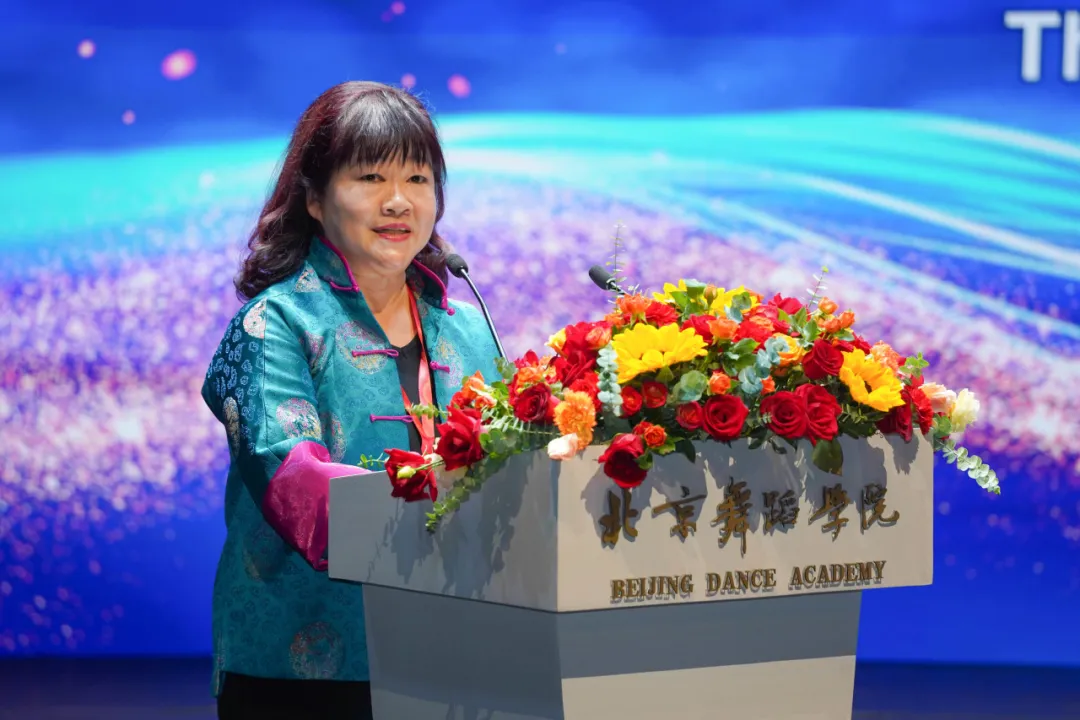
Ms. Tian Meili, Director of Malaysia’s Tian Meili Dance Academy, delivered a speech titled The Impact of Language in Dance Training.
She emphasized language’s critical role in dance instruction, noting that teachers’ wording directly affects learning outcomes and cultural transmission. Appropriate guidance can ignite students’ interest and build confidence. Dance education, she stressed, extends beyond physical expression to integrate traditional culture. Through gentle communication, instructors can foster positive energy in students, empowering them to become pillars of the nation.
In the forum’s closing remarks, Professor Xu Rui, President of Beijing Dance Academy, expressed gratitude to all distinguished guests for their insightful presentations. He emphasized that the forum successfully achieved its goals of facilitating academic exchange, enhancing mutual understanding, and building consensus. Inspired by the symbolism of the Alliance’s logo, he called upon member institutions to continue advancing hand in hand, strengthen cooperation, and focus on education, dance, and human development. Together, they will propel theoretical innovation and practical exploration of critical issues in dance education, contributing their collective wisdom to shape globally recognized standards for world dance education.
This forum stands as not only a pivotal academic conference in the field of higher dance education, but also a milestone event for international dance education exchange and cooperation in the globalized era. It harmonized artistic and academic pursuits while fostering mutual exchange and appreciation across civilizations and cultures. All participating institutions expressed, in diverse ways, their commitment to collaborate with Beijing Dance Academy in jointly advancing the prosperity of global dance education.

